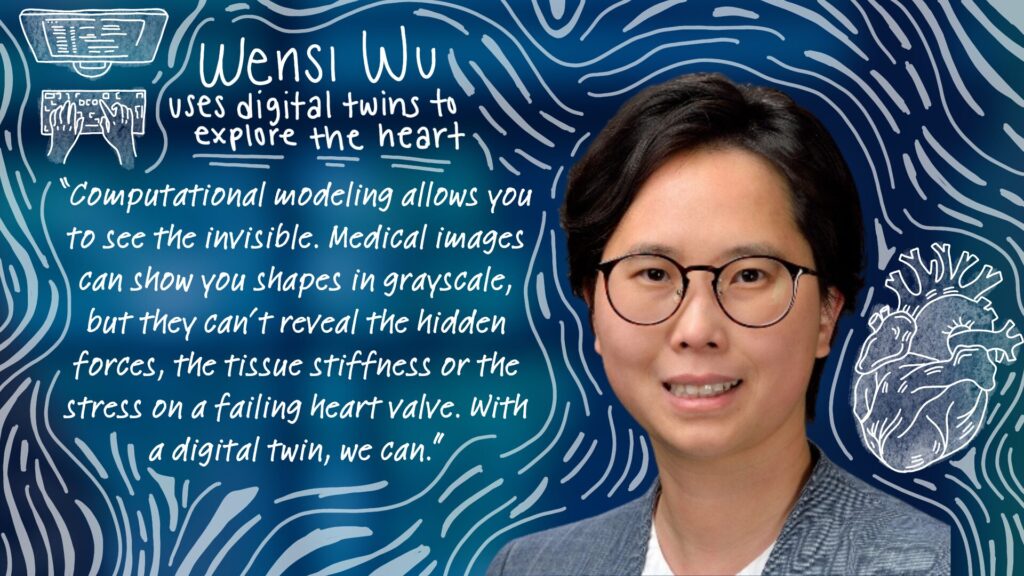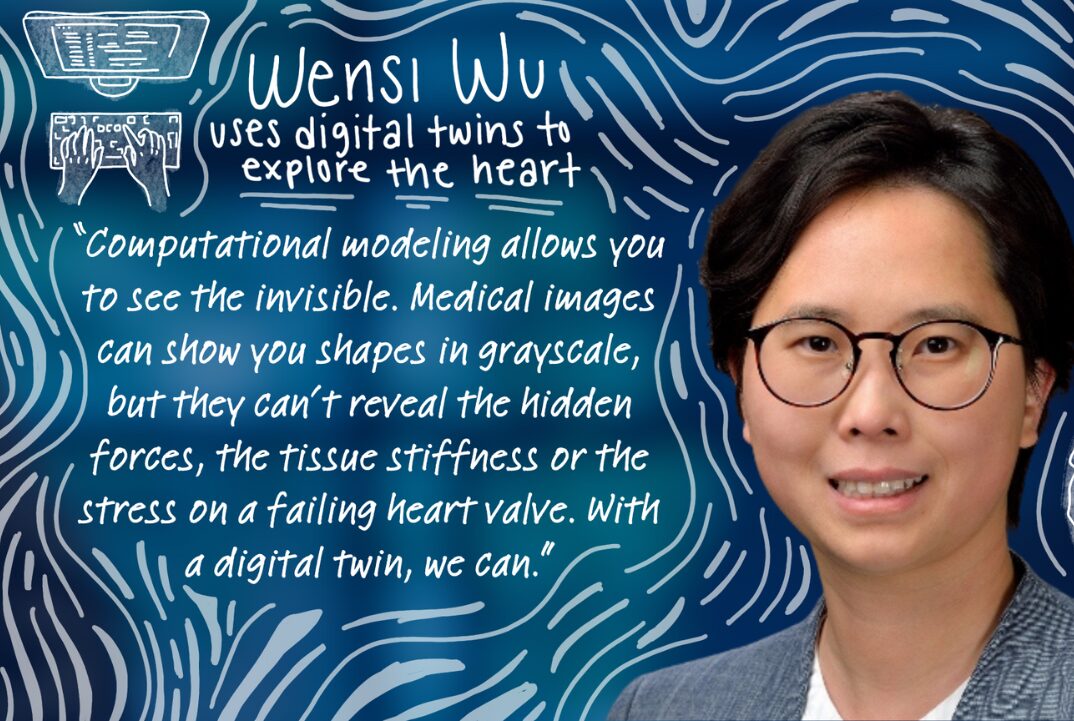
When Wensi Wu, Research Assistant Professor in Mechanical Engineering and Applied Mechanics (MEAM), first stepped into the world of computational modeling, she wasn’t thinking about hearts or hospitals. She was thinking about ships.
“I’ve always been fascinated by how powerful technologies can model what really happens in the world,” she says. “That curiosity led me to build models of everything from naval vessels to blast impacts on the brain.”
Today, Wu is a research faculty member at Penn Engineering, where she’s pivoted from ships to the circulatory system, developing “digital twins” of the human heart. Digital twins are virtual simulations made through computational modeling that provide a highly detailed virtual model of a physical system, object or process that mirrors its real-world counterpart in both structure and behavior. Unlike a simple simulation, a digital twin is continuously informed by real data, often from sensors, medical images or experimental results, which allows it to evolve and respond dynamically, just like the system it’s replicating. Wu’s work focuses on computational models that capture both the visible and invisible aspects of cardiac function: from fluid dynamics to the microstructure of heart tissue.
“Computational modeling allows you to see the invisible,” she explains. “Medical images can show you shapes in grayscale, but they can’t reveal the hidden forces, the tissue stiffness or the stress on a failing heart valve. With a digital twin, we can.”

